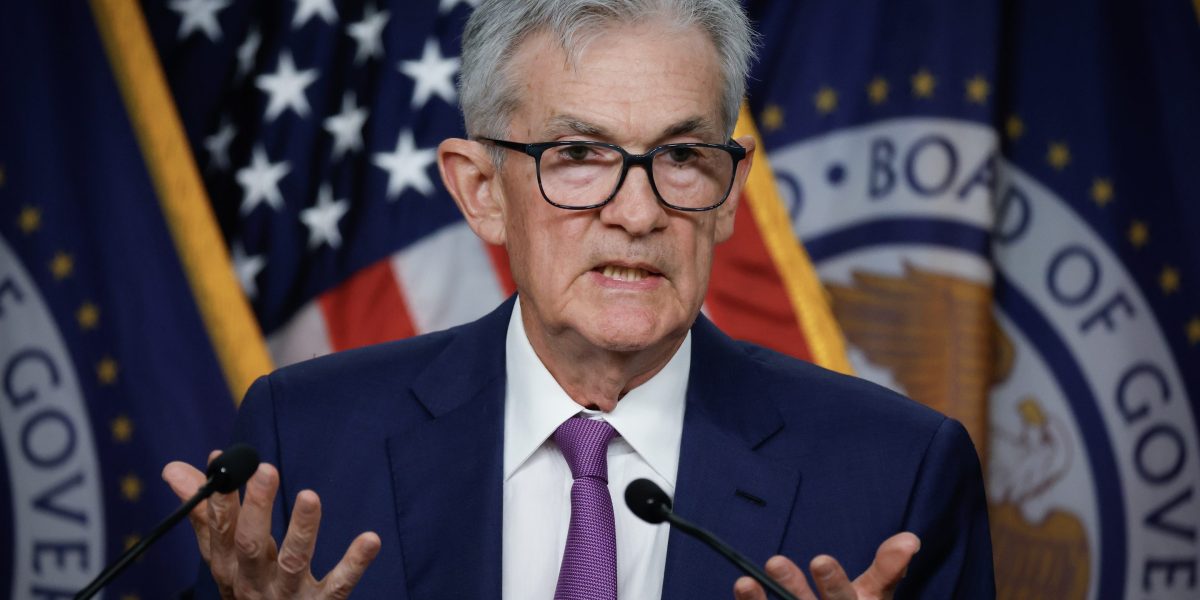
Get ready for a bonanza of rate cuts from the Federal Reserve that starts in a few months and extends all the way into next summer, according to analysts at Citi Research.
In a note on Friday, the bank cited fresh signs of a slowing economy for its view that the Fed will trim rates by 25 basis points eight times, starting in September and extending to July 2025.
That will lower the benchmark rate by a whopping 200 basis points, or from 5.25%-5.5% now to 3.25%-3.5%, where they will remain for the rest of 2025, the note said.
The economy has cooled off from its “heady” pace in 2023 with inflation resuming its slowdown after some unexpected stickiness, said Citi analysts led by chief U.S. economist Andrew Hollenhorst.
But the Institute for Supply Management’s service-sector gauge, which abruptly reversed into negative territory, and the monthly jobs report, which showed unemployment rising to 4.1%, have raised the risk of a sharper weakening of economic activity and a faster pace of rate cuts, they added.
The data along with dovish comments from Fed Chair Jerome Powell on Tuesday suggest the first rate cut will very likely come in September.
“A continued softening of activity will provoke cuts at each of the subsequent seven Fed meetings, in our base case,” Citi predicted.
The note also pointed to other signs of weakness in the jobs report. While the headline payroll gain of 206,000 appears solid, prior months were revised down. And June saw a decline of 49,000 temporary services jobs, with Citi calling it “the type of decline that is typically seen around recessions as employers begin reducing labor with the least strongly attached workers.”
Payroll data are also likely skewed to the upside, leaving the unemployment rate, which is derived from a separate survey, as the more important metric, it said. And on that front, Citi pointed to the “Sahm Rule” recession indicator and said it could be triggered in August if unemployment continues to rise at its current pace.
Hollenhorst has been a relative contrarian this year by maintaining a dimmer view on the economy, even as the Wall Street consensus shifted to a soft landing.
In May, he doubled down on his warning that the U.S. is headed for a hard landing and that Fed rate cuts wouldn’t be enough to prevent it. That followed a similar forecast in February, even amid blowout jobs reports.
In an interview with Bloomberg TV on Wednesday, Hollenhorst noted that a sharp recession would likely produce enough political consensus for more government spending to stimulate the economy, overcoming concerns about the massive deficit. But a more mild recession may not result in such a consensus, he added.
He also pointed out that just as Fed rate hikes slowed the economy less than anticipated, rate cuts have not stimulate as much. In addition, 10-year bond yields, which serve as benchmarks for a wide range of borrowing costs, are already below 2-year yields, leaving less room for further downside, especially as rising deficits and inflation add upward pressure.
“Most economic activity is going to be more responsive to a 5-year yield, the 10-year yield. It’s not really about the overnight policy rate,” Hollenhorst explained. “So there really are questions about how much can you transmit that stimulative effect of lower policy rates.”















